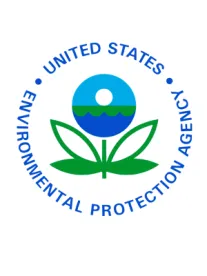Around town here in Washington, D.C., there has been much discussion of the meaning and impact of the Supreme Court’s decision in UARG v. EPA. The prevailing view seems to be that the Tailoring Rule has been effectively, if not expressly, vacated. As explained below, it may be premature to rule out the Tailoring Rule in its entirety – at least before EPA speaks to the issue.
Regulatory context is key. EPA is undoubtedly sifting through its options in responding to the decision, and may be inclined towards a path that allows PSD permitting for greenhouse gas emissions (GHGs) to proceed with the least possible amount of regulatory retrofitting. Why? Among other things because the Agency’s climate change policy focus, and energy, has shifted to completing the CAA section 111 NSPS and ESPS – EPA’s primary second term deliverables to the Obama White House – and the same staff that is servicing that effort would need to address a re-do of (or replacement for) the Tailoring Rule.
How might the Agency try to keep part of the Tailoring Rule alive? Recall that the Tailoring Rule had several discrete steps to it. Step 1, which started in January of 2011, provided that no source would become newly subject to the PSD program or CAA Title V solely on the basis of its GHGs, but sources required to obtain permits anyway because of their emission of conventional pollutants (so-called “anyway” sources) would also need to comply with BACT for GHGs if they emitted GHGs in amounts of at least 75,000 tons per year CO2 equivalents. Importantly, Step 1 did not sunset with the arrival of Step 2; rather Step 2 added a layer onto the Step 1 platform.
Step 2, which started in July of 2011, contemplated that new sources with the potential to emit at least 100,000 tons per year CO2 equivalents and modified sources with increased emissions to the tune of 75,000 tons per year CO2 equivalents would be subject to PSD and Title V permitting. In Step 2, GHGs became PSD stand-alone, or gateway, pollutants. While the Tailoring Rule had contemplated additional steps that would progressively reduce the GHG permit threshold for stand-alone sources, EPA announced in 2012 that it would retain the Step 2 thresholds until at least 2016.
In UARG, the Court plainly concludes that EPA cannot reasonably interpret the Clean Air Act to grant EPA the authority to treat GHGs as stand-alone, or gateway, PSD pollutants. Just as plainly, this of necessity takes down Step 2 (as well as any subsequent steps) of the Tailoring Rule. The interesting question is what this means for Step 1. Consider the following:
-
The Court does not expressly vacate the Tailoring Rule; it rather invalidates the rule to the extent that it treats GHGs as PSD gateway pollutants. It qualifies its ruling as follows: “EPA may, however, continue to treat greenhouse gases as a ‘pollutant subject to regulation under this chapter’ for purposes of requiring BACT for ‘anyway’ sources.” The part of the rule most obviously implicated by the Court’s qualification? Step 1.
-
Consistent with its partial invalidation of the rule, the Court affirms in part and reverses in part the Circuit Court’s judgment upholding the rule in its entirety. The affirmation can only be associated with the part of the rule arguably consistent with the Court’s opinion – Step 1.
-
Step 1 is, in essence, the construct supported by Justice Scalia and the majority. While the Court is clear that “EPA may require an ‘anyway’ source to comply with greenhouse-gas BACT only if the source emits more than a de minimis amount of greenhouse gases,” and the Court plainly does not see the 75,000 tons per year Step 1 threshold as a true de minimis threshold, its opinion is ultimately ambiguous with respect to whether a true de minimisthreshold must be fashioned before further permits to “anyway” sources can be issued. It is worth noting in this regard that the Court did not explicitly reject the Agency’s use of an administrative necessity-based threshold like the 75,000 tons per year threshold as an interim approach, which may leave open to EPA the possibility of trying to preserve Step 1 as a bridge to future rulemaking.
This is surely not the only path that EPA is considering. EPA may, for example, consider an interim final rule (or possibly a direct final rule) as a vehicle for establishing a temporary or final de minimis threshold. Or the Agency may look at the possibility of sorting out the de minimis question on a permit-by-permit basis.
Procedurally, the D.C. Circuit will likely conduct further proceedings to effectuate the Court’s decision and may provide the Agency with additional marching orders, so a bit of wait and see is advisable. In any case, since preservation of Step 1 of the Tailoring Rule may be one of EPA’s more easily executed and administrable options, look for further discussion of this approach in proceedings that lie ahead.




 />i
/>i

